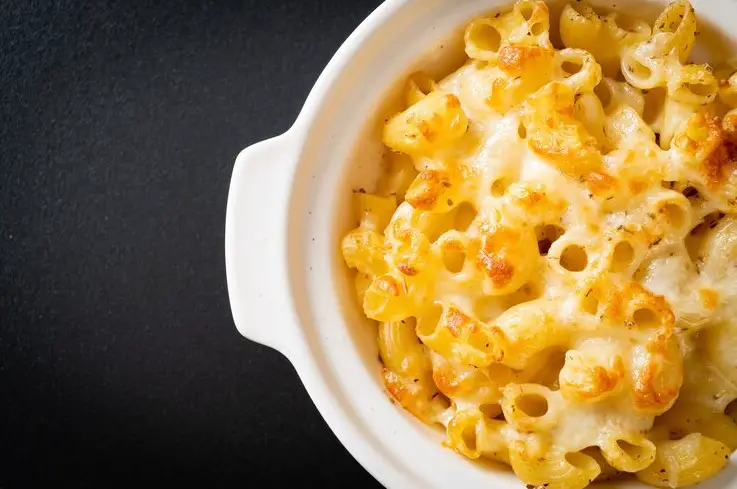Introduction to Haitian Mac and Cheese
Introduction to Haitian Cuisine
Haitian cuisine, a rich tapestry of flavors, is a testament to the island’s history and its diverse cultural influences. This culinary tradition is a harmonious blend of African, Taino, and French elements, each adding its unique essence to the overall palette. Haitian dishes are known for their bold use of herbs and spices, creating a profile that is both robust and tantalizing. Staples like rice, beans, and tropical fruits are common, but the true spirit of Haitian cooking lies in its ability to transform simple ingredients into extraordinary meals. This is where Haitian mac and cheese, a standout dish in the Haitian culinary landscape, comes into play, offering a comforting yet exotic taste experience.
What Makes Haitian Mac and Cheese Unique?
Haitian mac and cheese, known locally as macaroni au gratin, diverges from its classic American counterpart by incorporating a delightful array of local flavors. This dish is characterized by its rich, creamy texture and the subtle kick of Caribbean spices. Unlike the traditional version, Haitian mac and cheese often includes a colorful mix of sautéed bell peppers and onions, infusing it with a unique tropical flair. The use of specific cheeses, such as Gouda, adds a depth of flavor that sets it apart. This dish is not just about the fusion of flavors; it’s a culinary representation of Haiti’s tropical environment and its cultural melting pot. For those interested in exploring other pasta dishes that blend different culinary traditions, Baked Pasta With White Sauce And Red Sauce offers a delightful experience.
Cultural Significance of Haitian Mac and Cheese
In Haiti, macaroni au gratin is more than just a dish; it’s a symbol of celebration and togetherness. Often served at family gatherings, holidays, and significant events, this dish represents the warmth and communal spirit of Haitian culture. It’s a comfort food that speaks to the heart, evoking memories and a sense of belonging. The preparation and sharing of Haitian mac and cheese are acts of love and tradition, passed down through generations, embodying the essence of Haitian hospitality and the joy of its cuisine.
The Recipe and Its Variations
Traditional Haitian Mac and Cheese Recipe
The traditional Haitian mac and cheese, or macaroni au gratin, is a creamy, cheesy delight that combines simple ingredients with rich flavors. Here’s how to make it:
- Ingredients:
- 1 lb rigatoni or penne pasta
- 1 red bell pepper, finely chopped
- 1 green bell pepper, finely chopped
- 1 medium onion, finely chopped
- 2 cloves garlic, minced
- 2 cups evaporated milk
- 1 cup mayonnaise
- 2 cups shredded Gouda cheese
- 1/2 cup grated Parmesan cheese
- Salt and pepper to taste
- Butter for greasing
- Step-by-Step Cooking Instructions:
- Preheat your oven to 350°F (175°C) and grease a baking dish with butter.
- Cook the pasta in salted boiling water until al dente, then drain and set aside.
- In a skillet, sauté the bell peppers, onion, and garlic until soft and fragrant.
- In a large bowl, mix the cooked pasta with the sautéed vegetables, evaporated milk, mayonnaise, and half of the Gouda cheese. Season with salt and pepper.
- Transfer the mixture to the prepared baking dish. Sprinkle the remaining Gouda and the Parmesan cheese on top.
- Bake for 20-25 minutes or until the cheese is bubbly and golden brown.
- Let it cool slightly before serving to allow the flavors to meld together.
Variations of the Recipe
- Regional Variations: In different parts of Haiti, you might find variations of this dish. Some regions add a bit of spice with Scotch bonnet peppers, while others might use local cheeses for a different flavor profile. In coastal areas, there’s even a version that includes bits of seafood, like shrimp or crab.
- Modern Twists: Contemporary takes on this classic dish often incorporate additional ingredients for new flavors. Some popular twists include adding smoked meats like ham or bacon, using different types of pasta such as fusilli or macaroni, or even incorporating vegetables like spinach or mushrooms for a healthier version. Chefs and home cooks alike enjoy experimenting with various cheeses, including mozzarella for its meltability or a sprinkle of blue cheese for a sharp, tangy kick.
For other Mac and Cheese recipes :
Cooking Tips and Techniques for Haitian Mac and Cheese
Best Practices in Preparation
Preparing Haitian mac and cheese, like any cherished dish, requires attention to detail and a few best practices to ensure the best outcome. First, choosing the right type of pasta is crucial; rigatoni or penne is preferred for their ability to hold the sauce and maintain texture. When cooking the pasta, aim for al dente as it will continue to cook in the oven. For the sautéed vegetables, use fresh produce and cook them until they are just soft, ensuring they retain some texture and flavor. The choice of cheese is also vital; Gouda is recommended for its creamy texture and rich flavor, but feel free to experiment with other types as well. Grate your cheese freshly rather than using pre-shredded varieties, as fresh cheese melts better and doesn’t contain anti-caking agents.
Lastly, when mixing your ingredients, do so gently to keep the integrity of the pasta and evenly distribute the cheese and vegetables.
Common Mistakes to Avoid
A few common pitfalls can affect the quality of your Haitian mac and cheese. Overcooking the pasta is a frequent mistake; remember, it will cook further in the oven. Avoid under or over-seasoning; taste your mixture before it goes into the oven and adjust accordingly. Be cautious with the amount of mayonnaise and milk to prevent the dish from becoming too runny. Another mistake is not greasing the baking dish, which can lead to sticking and difficulty in serving. Lastly, resist the temptation to overbake; you want a golden-brown top, not a burnt crust.
Tips for Perfect Consistency and Flavor
Achieving the perfect consistency and flavor in Haitian mac and cheese is about balance. Use full-fat evaporated milk for a creamy texture without making the dish too heavy. The mayonnaise adds a unique richness, so use a good quality brand. Balance the creaminess with the sharpness and depth of the cheeses. For a golden, crispy top, broil the dish for the last few minutes of baking. If you want to add a bit of heat, a small amount of finely chopped Scotch bonnet pepper can elevate the flavors. Remember, the key to a great Haitian mac and cheese is in the harmony of its creamy, cheesy goodness with the subtle kick of spices and the freshness of the vegetables.
FAQs
- How can I make my Haitian mac and cheese creamier?
- Use full-fat evaporated milk and a generous amount of cheese.
- Can I prepare it in advance?
- It’s best served fresh, but you can prepare the components ahead of time.


